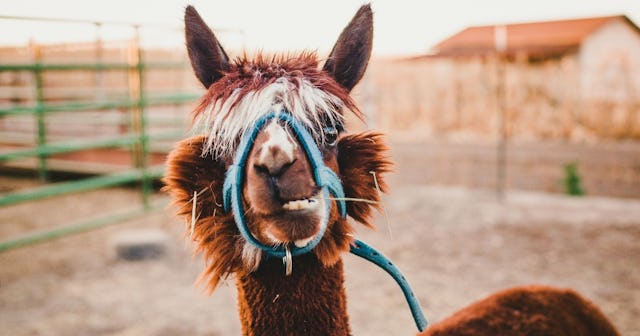Got Bored Kids? No Probllama! Print Out These 10 Llama Coloring Pages

Admit it — there’s something ll-amazing about llamas. Along with houseplants, the adorable fluffy farm animals have been something of a trendsetter for the last few years. From llama posters to mugs to notebooks to even a Christmas carol (“Fa La La La Llama,” anyone?), llamas are everywhere! And we’re llama-loving it. Who wouldn’t? These cute animals, a South American descendant of the camel (without the hump), are adorable with big personalities. For those reasons and more, they also make excellent art subjects, as you’ll see with our super-cute collection of llama coloring pages.
It goes without saying that llamas are unique-looking creatures, so no doubt, your little one might be curious about them. You can start by sharing with your tiny naturalist that camels’ big personalities are rivaled only by their size — these quite literally big mammals can grow up to six feet in height and can weigh between 280 to 450 pounds. Llamas typically live on ranches and farms throughout the world, including many petting zoos. If you can’t make a field trip to visit an actual llama, these free printables make a perfect at-home activity for you and the kids. No llama? No probllama!
When you finish filling in these cute camel cousins, you can move on over to our goat coloring pages, pig coloring pages, cow coloring pages, horse coloring pages, and garden coloring pages to get your farm animal fix.
Free Printable Llama Coloring Pages
Llama Page No. 1
Llamas are a South American member of the Camelidae family, which originated in North America before migrating to South America, and specifically Peru, over three million years ago. P.S. Their scientific name is llama glama, which just sounds fun to say. Want to know what else is fun? Watching The Emperor’s New Groove. It’s an animated Disney film about an Incan emperor who is turned into a llama.
Llama Page No. 2
Llamas might be large, but don’t let their stature fool you. They can run at a pace of up to 35 miles per hour.
Llama Page No. 3
People view llamas in myriad ways: as pets, cattle, and even transportation. In fact, they can carry a quarter of their weight! Plus, their thick coat makes them perfect for working in harsh weather conditions.
Llama Page No. 4
Did you know llamas can be taught simple commands? These clever creatures are prized for being intelligent animals.
Llama Page No. 5
Camels are also known to be extremely stubborn. You might tell them to do something 100 times, and if they don’t feel like doing it — like, say, carry that hefty load — they’re known to just lie down and wait until you figure it out. Sound familiar?
Llama Page No. 6
Despite their cute face, llamas are great at acting as a “guard” for other animals, such as sheep, since they can detect danger using their sharp senses of sight, hearing, and smell.
Llama Page No. 7
Llamas are herbivores, which means they only eat plants. They love chowing down on grass and hay, in particular, and can eat up to six pounds of hay in a single day.
Llama Page No. 8
You might know that llamas chew for a long time before they swallow. Just another quirky yet adorable characteristic! They also don’t need much water, which is why they can live in the mountains so easily. It’s also helpful for those long treks they might have to do transporting goods.
Llama Page No. 9
When angry or provoked, llamas don’t bite, but they do tend to spit. They mostly spit at each other, but they are known to sometimes spit at humans, too. Spitting is a form of herd dominance. Llamas typically live and move in packs, so there’s a social order to follow, which llamas might fight over. They’re even known to kick or wrestle each other in order to get their way. Besides fighting, llamas do know how to communicate. They use humming to speak to each other.
Llama Page No. 10
Llamas don’t have a definite mating season, meaning they can get down anytime. It’s usually the male llama that chases after the female for a few minutes until she accepts his advances. Female llamas carry their offspring, which is one baby at a time, for 11-and-a half months.
Click here to print all of the llama coloring pages at once!
This article was originally published on